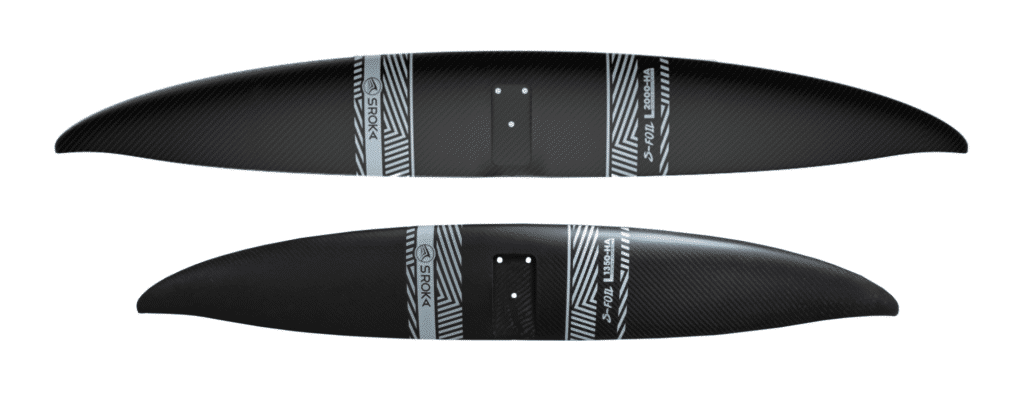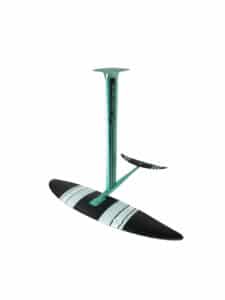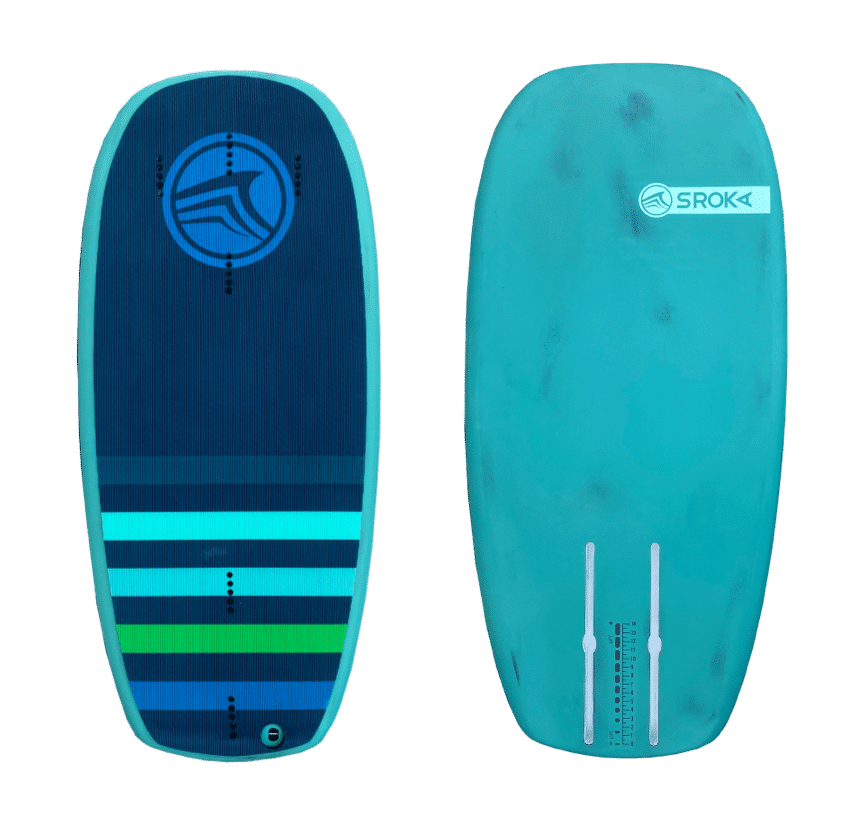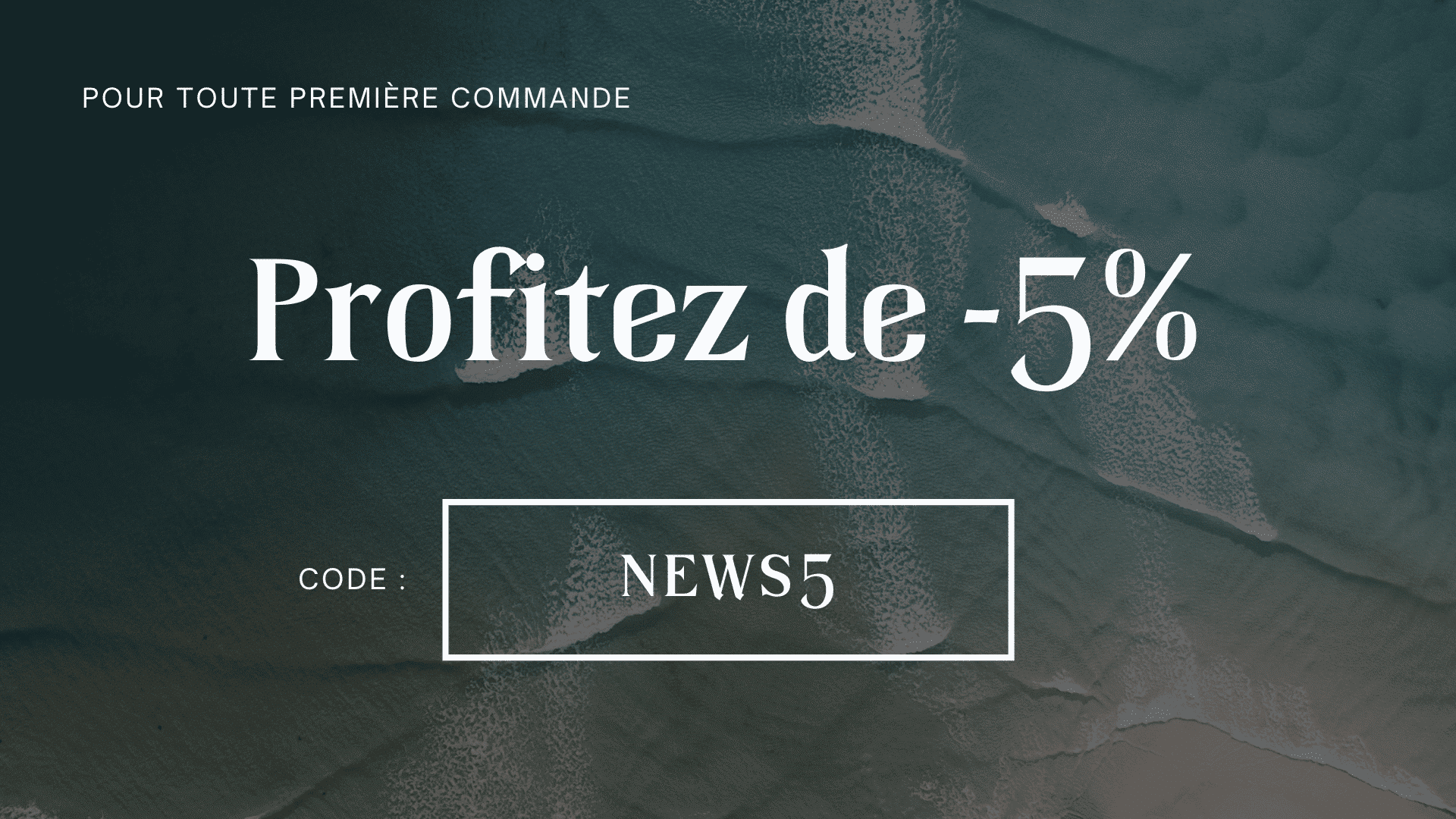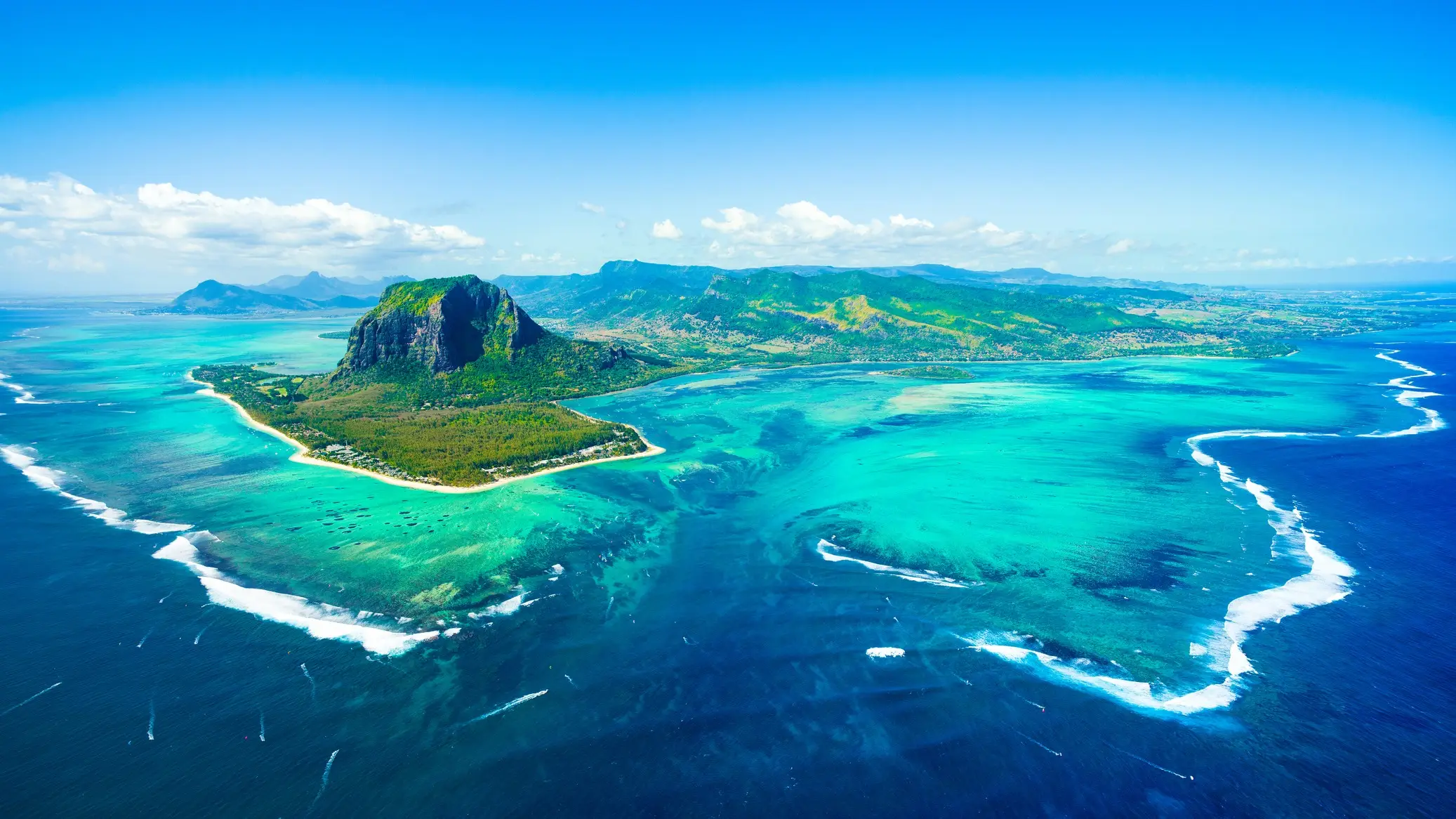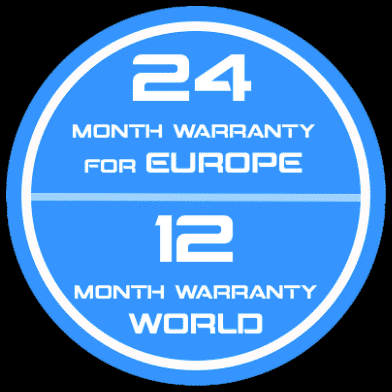Andalusia, a sunny region in the south of Spain, is a true paradise for water sports enthusiasts, especially wing foil. With its vast and diverse …
All our tips to start the dockstart in surf foil
“It’s not for us old people, it’s for young people who have a sense of peach and a sense of balance” You can hear this type of argument on the beaches. This is totally false. In this article, we’ll give you all the steps and information you need to get started with dockstart. We will talk about the equipment needed to begin, progress or perform by addressing the different techniques. Starting in dockstart requires a lot of repetition to get through the difficulties of the start. But you will find it a great way to train when the wind is not present to wing foil.
How to learn pumping faster?
What is dockstart?
Have you heard of the dockstart? It’s the thing where you break your jaw from the pontoon on your foil, pretending to be athletes, and where you try to stay in the air squirming like worms. It’s fun, eco-friendly and good for losing your mind. You don’t need wind, wave or kite to foil. Just Good gear, a light board and a spot with a pontoon and fairly deep water. The dockstart, It’s a struggle at first, but it can be learned. And it’s the foot to progress in pumping and prepare for surf foiling. It’s a great way to let off steam in a short time. Muscle strengthening guaranteed!
How do I start dockstart in foiling?
1 - Choose a suitable pontoon or dock
To have a successful foiling dockstart, it is important to choose a pontoon or dock that is wide and stable enough to allow you to race with the board in your hands. Avoid pontoons or docks that are too narrow or unstable as they could throw you off balance. Preferably choose a floating pontoon where your front fender will be able to pass under the dock and not get in the way while running. A pontoon between 30 and 60cm in height from the surface of the water is perfect. The height of the mast will need to be adapted to the height of the pontoon. A high pontoon will require more mast height, a low pontoon may allow you to use a shorter mast.
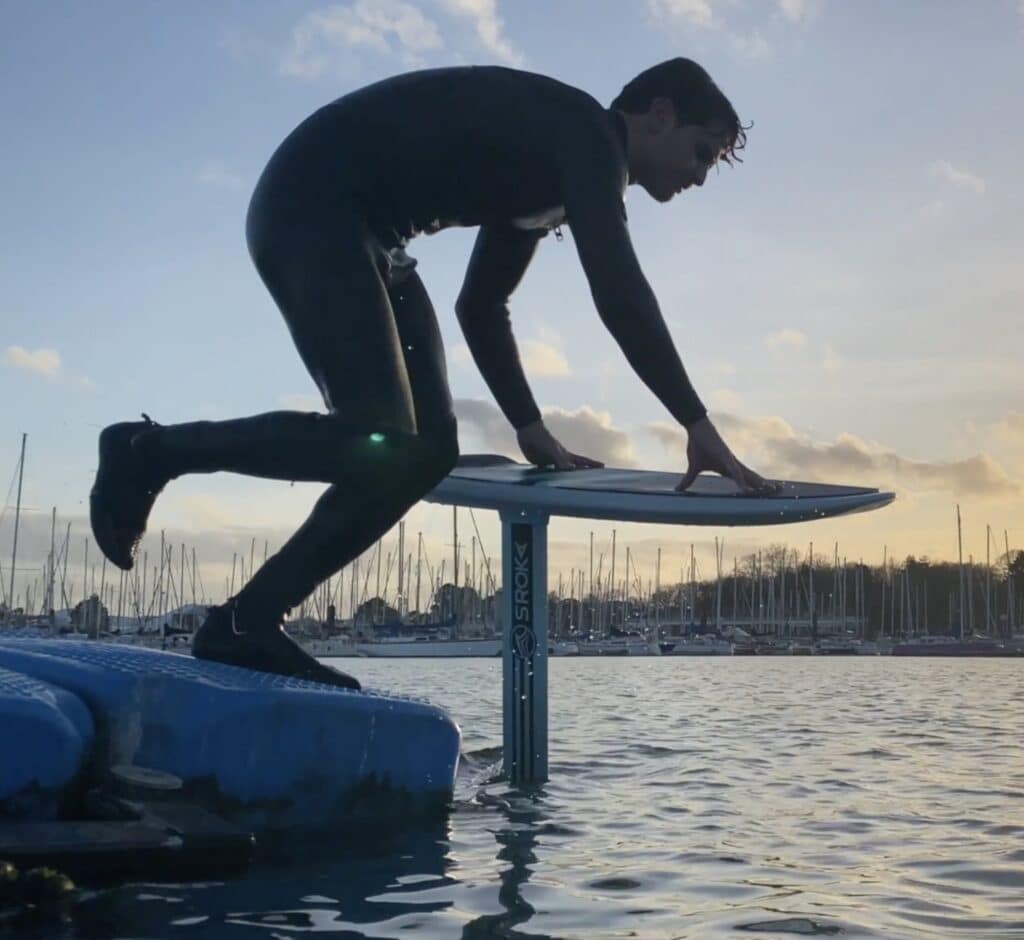
2 - Generate speed by running
To achieve a successful foiling dockstart, you need to generate speed by running on the pontoon or dock with the board in your hands (hold the board by the rails) and position the foil slightly underwater. Try to run as fast as possible while keeping your balance. In general, the smaller your foil, the more speed you will need to gain. Some large foils like our 2000 HA require almost no speed to start, our riders even manage to start without momentum. So adapt your movement speed to the power and surface area of your front wing.
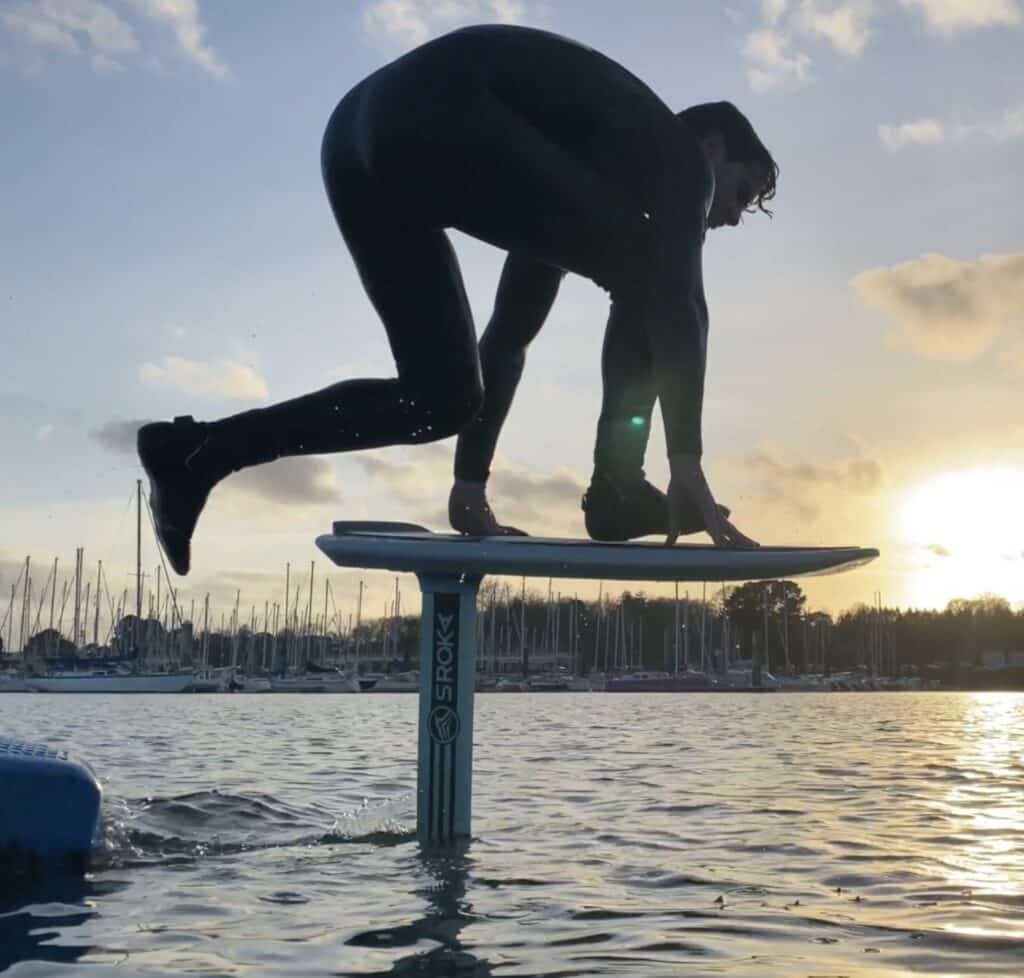
Once you’ve generated enough speed while running, it’s time to jump on the board. To do this, let go of the front rail of the board to rest your front hand on the surface of the board, and jump on it by landing with your feet well positioned. You can use the position of your hands to position your feet as close as possible to the ideal position.

The position of the feet is very important, as a bad placement is difficult to make up. It’s up to you to define your optimal position. Usually on a small board, the stern foot is right above the mast and the forefoot is just behind the front hand which is positioned on the deck.
Video foil: 2000 HA
Video foil: 2000 HA
4 - Stay in the air
Once you’re well positioned on the board, it’s time to start pumping and gliding for as long as possible. To do this, continue to generate speed with the pumping and make your foil oscillate downwards and then lighten your support so that the foil goes up. Ideally, it’s not just the legs that work, you have to be able to transmit energy to the foil by using the whole mass of your body with the help of the imbalance.
Keep your gaze fixed forward and try to keep your center of gravity above the board in the air.
Flying as high as possible will reduce the drag in foil and therefore allow you to fly longer with the minimum effort.
The movement of the arms when pumping: at the beginning, you can use your arms to lighten up, it also allows you to give a frequency, a pumping rhythm. As your level progresses, the use of the arms is less necessary.
By following these steps and practicing regularly, you should be able to master the foil dockstart technique and take off quickly and easily from any pontoon or dock.
Little extras to remember:
- Check that there is no nozzle or chain under the pontoon to avoid damaging the foil
- Avoid constantly bumping your board on the pontoon to preserve your equipment for as long as possible.
- When you fall, try to hold your board to prevent it from hitting a boat if you are in a port
- Choose a rigid foil that automatically transmits your support to the foil. You’ll be more efficient.
Conseil de Bruno SROKA
Keep your gaze fixed forward and try to be as stable and “straight” as possible when landing. “Straight” means that your center of gravity should be above the board. If you’re too far forward, backward left or right, you’re starting with an imbalance that will be difficult to correct.
Which equipment should I choose to practice dockstarting?
Do you still want to get started with the dockstart? First of all, you have to choose a good gear, otherwise you will struggle. The most important thing is the foil, because it’s what will make you fly or dive.
1 - The choice of foil:
There are different types of foils depending on their aspect ratio, i.e. the ratio between the length and width of the kite. The higher the aspect ratio, the longer the wing with little string. The lower the aspect ratio, the more chord the wing has and the less span it has.
Low/mid aspect foils

Foils with a medium aspect ratio (mid aspect) are the easiest to start with. They are simpler to manage and take off in dockstart. A foil is called a Medium aspect ratio, a foil that has less span and more rope. With this type of foil, itis easy to make up for its starting mistakes thanks to its manoeuvrability, which makes it easy to get them back on the desired axis and a very good power base at low speeds. However, they glide for a shorter time than high-aspect foils (more or less the same size) and will therefore require a higher pumping frequency.
Our best mid aspect kites dedicated to pumping are the classic range wings, especially the 1750 and 2000.
If you take a foil that is too small or too technical, you will probably fail. So you have to accept to take an easy foil that will slide a little less but that will allow you as a beginner to pump for a few seconds to tens of seconds.
High-aspect foils
Foils with high aspect ratio are the most effective because they offer a better glide and glide much longer and easily with less effort. They are made for those who want to make pumping terminals. On the other hand, they are more technical to master at the start and to relaunch after a turn, because of their large wingspan.
Our best HA wings dedicated to pumping are the Lift 1350 and 2000.
The 1350 will be perfectly suited to small people (less than 70 kg) or advanced levels who want to go faster.
The 2000 will be suitable for people over 70 kg or anyone who wants to glide for a long time with less effort.
A wing with a lot of wingspan will give you a lot more glide but will turn slower. So if you are looking for a record in time or distance, we advise you to use this type of front wing with an important aspect ratio.
2- Choosing the height of the mast
The mast in the water generates drag. So if you have a long mast and you want to be very low on the water, then you’ll have a lot of drag. To be efficient in pumping, you have to fly high on the water to have less mast area in the water and thus drag less water. So a mast between 70 and 80 cm seems perfectly suitable. The higher you are on the water, the shallower the foil and therefore the less drag there will be around the mast. This mast height is also determined by the height of the pontoon. If the pontoon is high, then the mast height will need to be increased. If the pontoon is low on the water or if you want to do a beach start then the 70 mast will be recommended.
3- The choice of the length of the fuselage
Pumping is making your foil oscillate up and down.
The length of the fuselage will influence the pumping frequency and consequently the ease of oscillating the foil in the longitudinal axis. The farther away the stabilizer is from the front fin (long fuselage), the more it will stabilize the foil in the longitudinal axis and thus brake oscillation (oscillation will be more difficult). However, for beginners, there will be more time to improve its pumping efficiency.
We have created a special pumping fuselage where the mast is set back 3 cm compared to other SROKA fuselages. This allows for a better distribution of support on the back and front leg and thus optimizes flight time.
A shorter fuselage will facilitate oscillations and on the other hand it will be less stable but more playful.
So depending on your level, you can make your pumping foil easier or more playful.
4- The stabilizer
By definition, the stabilizer is there to stabilize and restore some lift on the foil.
A large stabilizer will make it easier to pump at the start, slowing down the foil a little and giving more support to the foil. But it will block the oscillation of the foil a little more and slow down your foil a little more.
A smaller stabilizer will increase the glide of the foil and stabilize the foil less. Therefore, it will make the foil easier to oscillate. It will require more finesse in the supports and will therefore be more technical. (recommended for good riders).
We have developed a stabilizer in 290 cm HA with a high aspect ratio. It allows you to fly for a long time with less effort. However, it will cause the foil to slow down.
The goal of pumping is to fly the longest and/or travel the longest distance. Therefore, speed requires a lot of speed so will not allow you to fly for very long. In order to start pumping or to fly for a very long time, we advise you to take a larger stabilizer (the 290 HA).
5- The choice of the board
For pumping, choose a board that is light, compact, strong, and stiff. Stiffness is the key to sending energy into the foil. Otherwise, you will pump in the vacuum (the board will deform and tire you out for nothing. A compact board smaller than 4’0 is more conducive to efficient pumping.
5-1 What is the volume of board to dockstart?
A low volume is recommended. You can use your foil surfboard, but volume is not necessary. The less volume there is, the easier it will be to pump. A volume around 14-17 L is a good alternative.
5-2 What length of board to dockstart?
A board that is too big will be penalizing compared to a board that is too small. In dock start you don’t need a long board. If you go for the 4’0 pocket (125 cm) or the mini pocket 3’3 (97 cm) you will have the two most interesting options for you. Beginners will opt for the slightly larger board. It will give more ease and space to position yourself on it. The Mini pocket will be more for demanding riders, wanting a more compact and light board.
What is the best spot to start the dock start?
The pontoon, the best option to start.
Dock start is a sport that can be practiced almost anywhere. No need for special conditions. All you need is a place to go and your equipment.
The pontoon is ideally the best place to start in a Start dock. It is stable, easy to find and allows you to easily get back on the pontoon after each attempt. Ideally, you should find a pontoon with a little length that will allow you to gain speed. Pay attention to obstacles in the water: tips, buoys or others. If you use a wing with a lot of wingspan, it can be penalizing and lead to a fall.
To find the perfect pontoon near you, use google earth or google map, this will allow you to find the best option for you.
The ladder plant in the sand, or start from the beach for good practitioners.
If you don’t have a pontoon near where you are, you can create your “pontoon” using a folding ladder that is positioned in the water. This opens up the field of possibilities to infinity, however you will have to perfect your technique to succeed in starting with the minimum momentum.
So practice on the pontoon to reduce the race distance to be able to leave without momentum.
The second option is to start from the beach, it’s called the beach start. If you opt for this choice, go for a mast around 70 cm and ideally a beach that plunges quickly into depth. This will prevent your foil from hitting the sand all the time.
Starting with the dockstart isn’t the easiest. If you practice wingfoil, we advise you to get used to pumping by holding the sail by the front handle (in freefly mode) and trying to pump as much as possible to stay in the air. You can do the same in
wakefoil
by gaining speed behind the boat and then letting go of the rudder pedals. Surf foil is also a good method but it requires mastering the take-off, which is not an easy task for a beginner.
Pumping is a very good alternative when there is no wind on our spots.
What are the benefits of dockstart?
Dockstart and pumping aren’t just for fun, they’re also for good. Here’s why:
- A good pumping technique will allow you to take off sooner in wing. You can also avoid a few falls when you go into a slack, by pumping the time to regain air.
- It’s useful for connecting waves in surf foil or for flying free fly in wing foil.
- This boosts the cardio and the muscles of the legs, back, and abdominals. You will use the leg muscles to give impulses to the foil, the back muscles to maintain posture and the abdominal muscles to stabilize the torso. This has been done for a long time Also work on cardio because you have to make a constant effort to move forward.
- It’s a perfect solution for training when the wind isn’t present. Very playful when you got past the beginnings. One can easily create an emulation between friends.
- The main advantage is the small amount of equipment needed. All you need is a foil and a board.
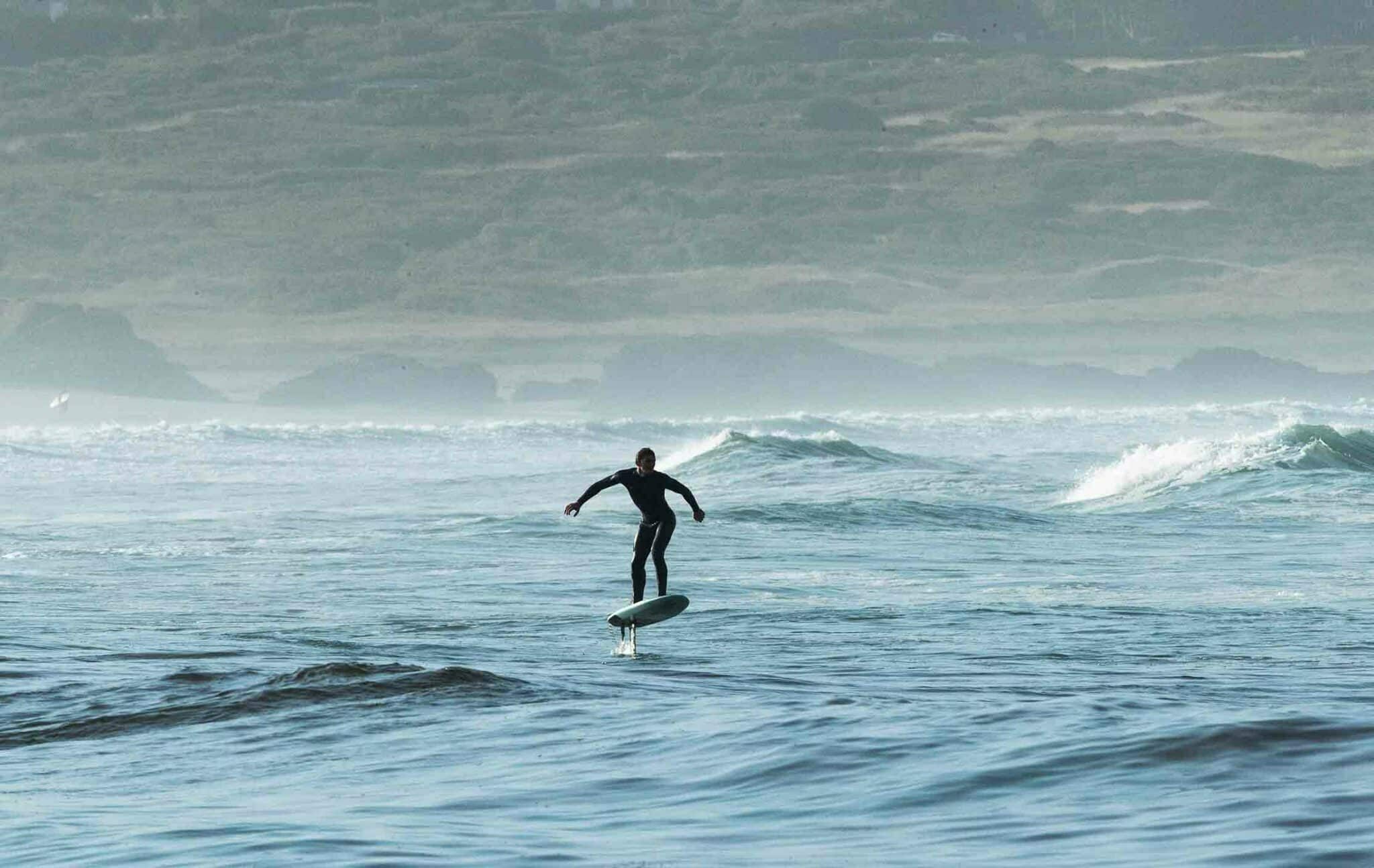
If you still have questions about this, or for any other request, please do not hesitate to contact us !
Article you may be interested in
The 360 wing foil is a maneuver that allows you to start freestyle flat on the water. This trick, which involves making a complete turn …
Mauritius, known for its white sandy beaches and crystal clear waters, is a dream destination for water sports enthusiasts. Among the popular activities that attract …
Wingfoiling is an emerging water sport that is gaining popularity due to its high accessibility. Whether you are young or old, wingfoiling is an activity …

